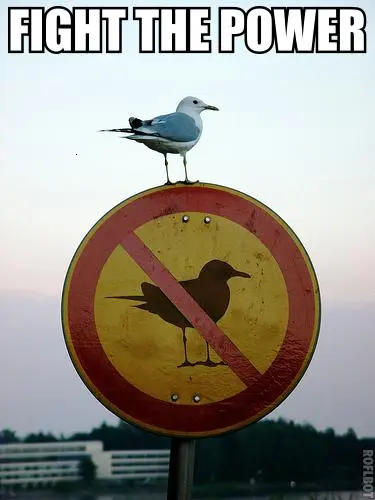That’s pretty damn cool, to be fair.
- 1 Post
- 95 Comments

 1·6 hours ago
1·6 hours agoCan you explain it to me too? Because I don’t get it either.

 1·6 hours ago
1·6 hours agodeleted by creator
I’m disturbed by the notion of having a bunk bed when the room is empty, with easily room for several normal beds.
It’s not even against the wall.
Psychotic behaviour.
The Borg have spheres too, to be fair.
 21·1 day ago
21·1 day agoThere’s an independent cinema near me which is doing it right.
The venue is a heritage building which has been refurbished to a high standard, and they have reasonably priced food and drink, including beers.
They participate in film festivals and show a lot of niche and foreign movies that would be impossible to find otherwise, so it’s actually worth going to see something different or interesting.
To support accessibility they have child-friendly showings with zero ads or trailers, autism-friendly showings also with no ads, brighter light and less volume, and even pay-as-you-can tickets that go down all the way in price to completely free if you ask for it, so everyone can see a movie, even people who have nothing.
To me, making the cinema experience actually appealing again like that, and an actual part of the community, is the only way for cinema to thrive going forward.
Of course, the big chains can’t possibly adapt to that, but as far as the big chains go, then fuck 'em.

 191·2 days ago
191·2 days agoI don’t personally like Nintendo’s actions, but I’m not sure why this article is trying to imply Nintendo miscalculated and don’t know what they’re doing - as if bricking consoles will somehow lose them money.
From Nintendo’s perspective, turning the used market into a minefield of bricked consoles can only be a good thing, because it encourages people to buy new, and buying new is money in Nintendo’s pocket.
And the conclusion that people won’t buy the console for their kids because of this? “Sorry kids, but Nintendo are bad so we cant play your favourite Mario - you’re getting a steam deck instead!” Like heck! A small minority maybe, but people will generally buy their kids what the kids ask for.
Nintendo know what they are doing.
These categories of geometric problem are ridiculously difficult to find the definitive perfect solution for, which is exactly why people have been grinding on them for decades, and mathematicians can’t say any more than “it’s the best one found so far”
For this particular problem the diagram isn’t answering “the most efficient way to pack some particular square” but “what is the smallest square that can fit 17 unit-sized (1x1) squares inside it” - with the answer here being 4.675 unit length per side.
Trivially for 16 squares they would fit inside a grid of 4x4 perfectly, with four squares on each row, nice and tidy. To fit just one more square we could size the container up to 5x5, and it would remain nice and tidy, but there is then obviously a lot of empty space, which suggests the solution must be in-between. But if the solution is in between, then some squares must start going slanted to enable the outer square to reduce in size, as it is only by doing this we can utilise unfilled gaps to save space by poking the corners of other squares into them.
So, we can’t answer what the optimal solution exactly is, or prove none is better than this, but we can certainly demonstrate that the solution is going to be very ugly and messy.
Another similar (but less ugly) geometric problem is the moving sofa problem which has again seen small iterations over a long period of time.

 7·2 days ago
7·2 days agoIt’s true.
Rules are meant to be broken - apart from when they aren’t.
You can change any aspect of the world any way you like, but only if doing that is critical to your universe and story.
Messing up without reason conventions that are well established is a dick move, unless the whole point of your work is to screw with people.

 73·2 days ago
73·2 days agoNah this one is easy.
If it’s green and sparkly, it’s a good thing. If it’s green and bubbly, it’s a bad thing.
It looks like a video game puzzle where you have to spot the excruciatingly obvious “hidden” password.
Yeah. When you buy a Logitech mouse that comes with a dongle in the same package, you don’t need to do anything, just plug it in.
In my case though, I bought a replacement dongle for a mouse that was missing one, and was able to use Solarr to pair it up.
Solaar does the other Logitech-specific stuff you need too, like macros, scroll wheel ratcheting, and all that.
For anyone needing to manage Logitech devices under Linux, try Solar
Got me sorted recently when I wanted to pair a dongle with a different mouse than it came with.

 4·6 days ago
4·6 days ago[The proposal] defines a deepfake as a very realistic digital representation of a person, including their appearance and voice.
The government said the new rules would not affect parodies and satire, which would still be permitted.
Seems like they’ve already thought about this, and the law will cover only digital clones, not human lookalikes - plus carve-outs for fair use satire.
I have two blåhaj - one in my bed for snuggles, who is well loved and well worn, and one hanging out on the back of my sofa for “Sunday Best” 😆

 5·7 days ago
5·7 days agoExactly :)
I’ve worked as a dev for the national health service in the UK, and all new government services promote a high standard of accessibility. We did a lot of in-person testing with users in labs, in rooms with the one-way mirrors like in a police interview and everything! Users with physical needs, and also users who are simply older, or have low tech literacy.
“Accessibility” covers a huge spectrum This can be the obvious things you might imagine like alt text on images, screen reader compatibility and dyslexic-friendly fonts, but it’s so much more.
We’re talking about things like ensuring good text contrast on all elements, making everything desktop and mobile responsive, using clear and simple language for instructions, and making the steps and user journey straightforward and easy to navigate.
A lot of accessibility concerns don’t only make the service better for people with specific needs, they make it overall better for everyone.

 7·7 days ago
7·7 days agoI’m glad I’m one of those people who can’t seem to percieve any difference above 60Hz
Having low standards is pretty convenient








Lol, thanks… :P
Still didn’t help (even after translating it to English, because obviously it’s just “Hey, horse” - in fact it made it worse as Google translates it as “Hi, horse” which I later learned completely ruins the joke)
In desperation I searched the joke, and found the same joke elsewhere phrased a different way:
The difference in telling between “Hey, horse” and just “Hey” was massive and made it instantly clear.
Hey = Hay
Dumb I didn’t see it but yeah.